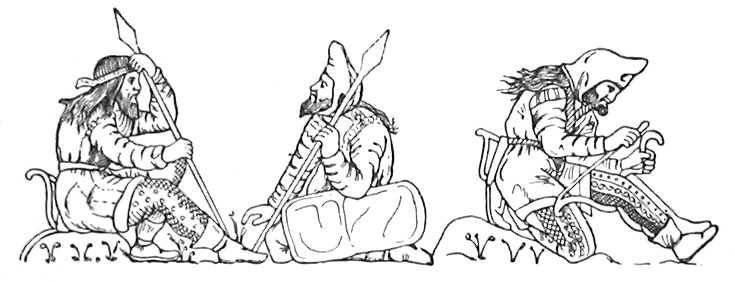Could this be relevant? https://en.wikipedia.org/wiki/Bastarnae#Germanic - an link between Germanic and Iranic peoples in Ukraine & Eastern Carpathians. In particular, described by Greco-Romans as Germanic-speaking, but with the proposition of Trubacev that their name derives from the ancient Persian/Avestani words bast- "bound, tied; slave" and *arna- "offspring",
Perhaps these people descended from freed Germanic slaves of Iranic Scythians, some of whom admixed in with the Iranics, and most of whom later returned to their Germanic brethren in the Eastern Baltic.
Small traces of DNA I've picked up in modern Iranians look a bit like an odd mixture of ancient populations from Sweden, Czech Republic and NW Ukraine, although there is insufficient data to have much confidence about this.
Could the Germanic Bastarnae and Iranic Scythians each have had some influence on each other's languages?
I talked about Bastarnae, a Germanic tribe in Getae about 600 years before Goths, in this thread: https://www.eupedia.com/forum/threa...evidence-to-prove-Goths-came-from-Scandinavia
Some Scythians who lived in Europe were actually Germanic people.
https://en.wikipedia.org/wiki/File:Scythian_Warriors.jpg

Scythian warriors, drawn after figures on an electrum cup from the Kul'Oba kurgan burial near Kerch. The warrior on the right is stringing his bow, bracing it behind his knee; note the typical pointed hood, long jacket with fur or fleece trimming at the edges, decorated trousers, and short boots tied at the ankle.
As I said in my previous post Old Persian xauda "hood" is a loanword from proto-Germanic (proto-IE *k could never be changed to x in Iranian languages, except in consonant clusters), and in the Old Persian texts we read this word just about Scythians who wore pointed xauda "hood".

https://en.wikipedia.org/wiki/Haplogroup_U_(mtDNA)#Haplogroup_U7
"Genetic analysis of individuals associated with the Late Hallstatt culture (6th century BC) from Baden-Württemberg Germany considered to be examples of Iron Age "princely burials" included haplogroup U7."
Warrior of Hirschlanden: https://en.wikipedia.org/wiki/Warrior_of_Hirschlanden

The Warrior of Hirschlanden (Krieger von Hirschlanden in German) is a statue of a nude ithyphallic warrior made of sandstone, the oldest known Iron Age life-size anthropomorphic statue north of the Alps. It was a production of the Hallstatt culture, probably dating to the 6th century BC. It is now in the Württembergisches Landesmuseum in Stuttgart, with a copy at the Hirschlanden site (now Ditzingen, Baden-Württemberg, Germany), where it was found.
The warrior wears a torc (neck-ring), a belt with a typical late Hallstatt dagger, and a pointed hat, possibly made (as with the real hat in the princely grave of Hochdorf) of birchbark.
Gutian Warrior with pointed hat, Luristan bronze:


